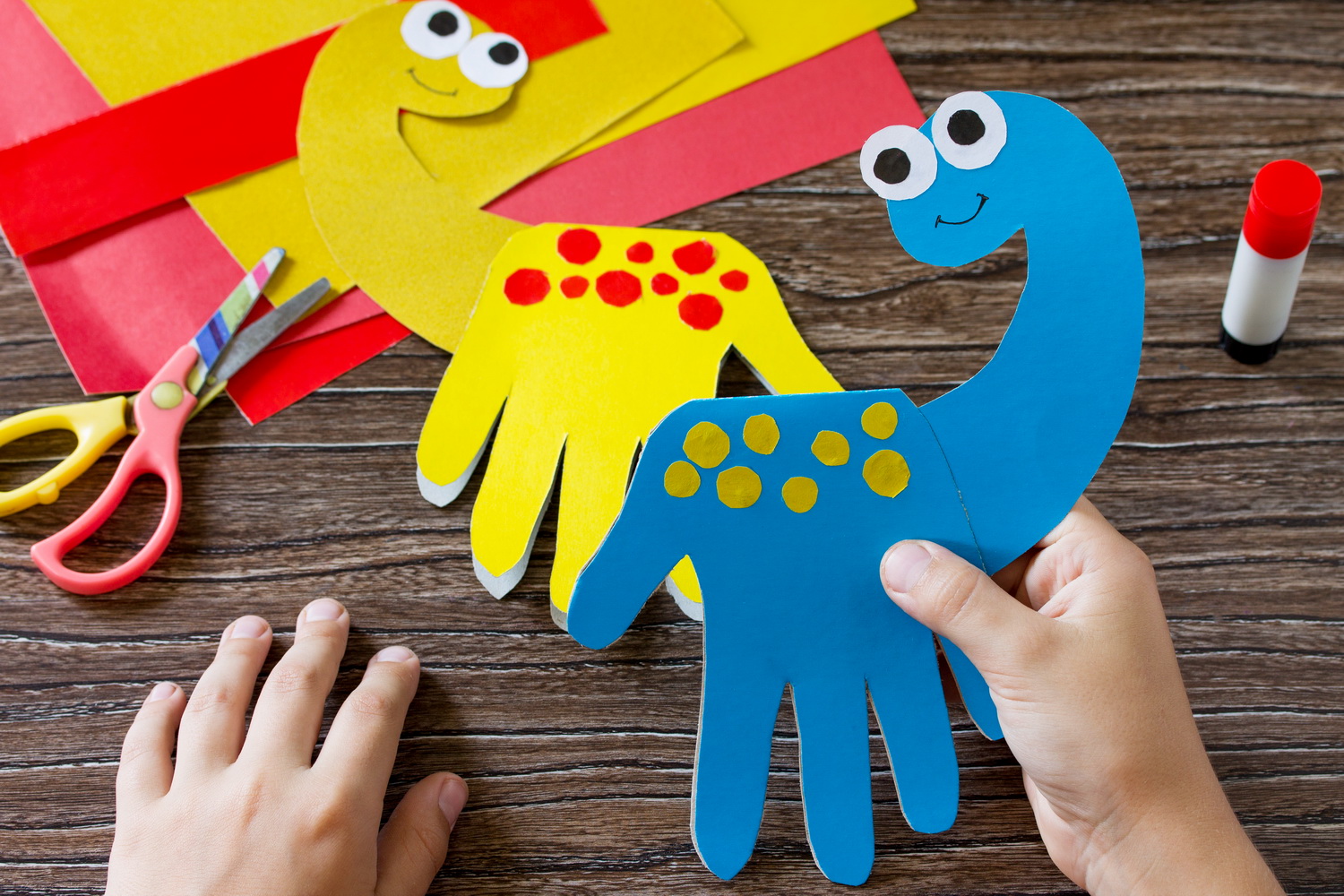8 Ways to Foster Healthy Eating Habits in your Child
March 30, 2022
Do your kids beg you for candy every time you try to get out the door at the grocery store? How often have you pleaded with your child to “just eat their broccoli already”? Giving your child the knowledge behind healthier eating options can mean the difference between forcing your kids to eat something they don’t want to and the courage to pick the food they know will help their body be its best! Here are eight ways you can introduce healthy eating habits to your children:
1. Eat as a family and include your kids in nutritional conversations
Researchers have long known that families are more connected when they eat together. Modeling table etiquette and eating various foods exposes your children to positive and socially beneficial eating habits. Discuss how different foods can benefit their bodies and brains and what jobs certain foods accomplish. Kids Academy has a starter worksheet for your little learner here that can help them identify foods high in vitamin C.
2. Avoid eating meals in front of screens
Watching tv or playing a video game while eating can disrupt our sense of exactly how much we eat and whether we are still hungry or not. Studies show that people eat more food when they eat in front of a screen. Help your child identify healthy habits with Kids Academy’s Healthy Bodies worksheet. When you sit down to eat as a family, teach your children to chew their food slowly and to savor the experience of sharing a meal together.
3. Give responsibility when food shopping
Let them assist you at the grocery store. Check the shopping list together, and delegate a child or your children to find particular items. This is also a great way to discuss budgeting your money for healthier options and how much further money can stretch when thoughtful choices are made ahead of shopping.

4. Choose your words carefully
There are no “good” or “bad” foods, only the quantity and consistency at which they are consumed. Attempt not to use food as a bribe, reward, or removal of food as punishment to avoid negative relationships around food. Show your child how reading labels can assist them in identifying serving sizes, suitable quantities of sugar, saturated fats, and sodium, as well as which products are highly processed, depending on their age and maturity. Give your child some practice comparing nutritional comparisons while also working on their math rounding skills with Kid Academy’s Rounding a Healthy Diet worksheet. Our Food Pyramid Matchup will assist your youngster with categorizing different food groups and determining the right serving sizes.
5. Model healthy food choices
Children are more likely to try foods that they see the rest of their family consuming daily. Eating a generally healthy diet as a family will develop beneficial eating habits in your children from a young age, increasing the likelihood of carrying these behaviors into adulthood. This also means that everyone eats the same meal at dinner – of course, families should always be sensitive to dietary restrictions and food allergies, but parents should not step into the role of a short-order cook.
6. Try different ways of preparing the same food
Some children may hate steamed carrots, but they might love them raw, and dipped in hummus or ranch dressing! Keep sensory issues in mind; a child may not like long, slippery spaghetti, but twisty pasta or wagon wheels may be easier to keep on their fork. Stay flexible and try alternatives. Your family just might find a new favorite.

7. Prepare food together
When children participate in meal preparation, it gives them a sense of ownership and responsibility. Cooking takes a lot of time and patience, and gaining these skills boosts independence and confidence. Everyone’s talents vary when it comes to cooking, so varying levels of supervision are necessary. Young cooks can make a great meal from even the most basic kitchen skills, such as a microwave or an electric kettle.
8. Let your kids cook!
Attempt to pick a meal your child likes or look online together for a recipe they are interested in trying. It’s essential to make sure the recipe is straightforward, not overly complicated, and is well within your child’s abilities to complete with some help. Any recipe may be improved by learning additional self-sufficient cooking skills that your child can apply to any future meals they attempt to try.
Kid-Approved Recipes
Helping your kid gain confidence in the kitchen is simple! Start with these easy, nutritious, and well-liked recipes:
Mini English Muffin Pizzas
Who doesn’t like pizza? Toast a whole-wheat English muffin, spoon some over tomato or pesto sauce, and sprinkle with cheese. Your child will be getting a serving of whole grains, dairy, and the options for adding fun, fresh, and healthy veggies and toppings are limitless!
Chicken Noodle Soup
Children will love this recipe for its versatility. You only need to add what works for your family and their preferences. Let your child help cut any vegetables of their choosing (with supervision, of course!) and measure seasonings, like garlic powder, tarragon, or parsley. Boil a whole chicken and remove it to shred the meat off the bones, throw in the cut veggies, and put the shredded meat back in the broth near the end of cooking. At this point, you may want to add rice, beans, or pasta in fun shapes! Finish with salt and pepper, and your child will be patting themselves on the back for making such a sophisticated and delicious meal! This recipe can, of course, be adapted to a vegan or vegetarian lifestyle by omitting the chicken.
Nut Butter Wrap
Slather a whole wheat tortilla with the nut butter of your choice (peanut, sunflower, and cashew are all excellent) and top with apple or banana slices. Wrap everything up like a burrito. This recipe is especially helpful if you need something on the go.
Yogurt and Fruit Popsicles
Give your child an extra boost of fiber and probiotics with this delicious treat. Making the popsicles are the fun part! Let your child help chop up their choice of fruit (this can be any fruit, from berries, to melons, or even kiwi slices. Spoon the chopped fruit into popsicle molds and layer with your choice of low-sugar yogurt. Freeze and enjoy.
Lastly: It’s a lifestyle, not a diet
Moderation is key. Dessert should probably not be an everyday occurrence; however, a piece of birthday cake eaten at the occasional party or ice cream on a hot day is perfectly acceptable. Stick to foods as closely related as its form in nature and less processed, such as fresh fruit, vegetables, and nuts and seeds. Try to make healthy food “switches,” like diced or pureed fruit on pancakes instead of syrup, avocado on your sandwich instead of mayonnaise, and using a lettuce leaf instead of white bread to wrap around a lean protein. Limit your child’s intake of sugary drinks, juices, and sodas, which can be consumed quickly and add up in “empty” calories.

Encourage your child to be fearless with food! Letting them assist in the kitchen will help them with their confidence. Praise their healthy food selections and when they pick the more beneficial option when given a choice. They can also practice these skills on the Kids Academy Resources page with our fantastic Healthy Food Maze! You can always find more educational resources to support your child’s growth and development at Kids Academy.
About the author
United States, CA, Felton
References:
- Alli, MD, R. (2020). Healthy Eating Habits for Your Child. WebMD. https://www.webmd.com/children/kids-healthy-eating-habits.
- Caldwell, A., & Shackelford, M. (2019). Teach your kids healthy eating habits | Luminis Health. Luminis Health. https://living.aahs.org/childrens-health/teach-your-kids-healthy-eating-habits/.
- Elsenbrook, R. (2019). Teaching Kids Healthy Eating Habits | Kelsey-Seybold Clinic. Kelsey-seybold.com. https://www.kelsey-seybold.com/your-health-resources/blog/teaching-kids-healthy-eating-habits.
- KIM, H., PARK, J., MA, Y., & IM, M. (2019). What Are the Barriers at Home and School to Healthy Eating?: Overweight/Obese Child and Parent Perspectives. Journal Of Nursing Research, 27(5), e48. https://doi.org/10.1097/jnr.0000000000000321
- Kubala, MS, RD, J. (2020). 15 Healthy Recipes You Can Cook with Your Kids. Healthline. https://www.healthline.com/nutrition/recipes-to-cook-with-your-kids#2.-Strawberry-and-cantaloupe-yogurt-pops.
- Maziah, M., Saemah, R., & Nooraziah, J. (2015). Child-friendly Approches: Choosing the Best Educational Psychology Tool to Teach Healthy Behaviour for Kids. Procedia - Social And Behavioral Sciences, 191, 435-441. https://doi.org/10.1016/j.sbspro.2015.04.679
- Shaping positive eating behaviours - Healthy Kids. Healthy-kids.com.au. (2022). https://healthy-kids.com.au/parents/developing-positive-eating-behaviours/.
- Slyter, K. (2019). 8 Proven Tips on How to Get Kids to Eat Healthy. Rasmussen.edu. https://www.rasmussen.edu/degrees/education/blog/how-to-get-kids-to-eat-healthy/.
- Sweeney, E. (2020). How to Teach Children About Healthy Eating, Without Food Shaming. Nytimes.com. https://www.nytimes.com/article/kids-healthy-eating-habits.html.












